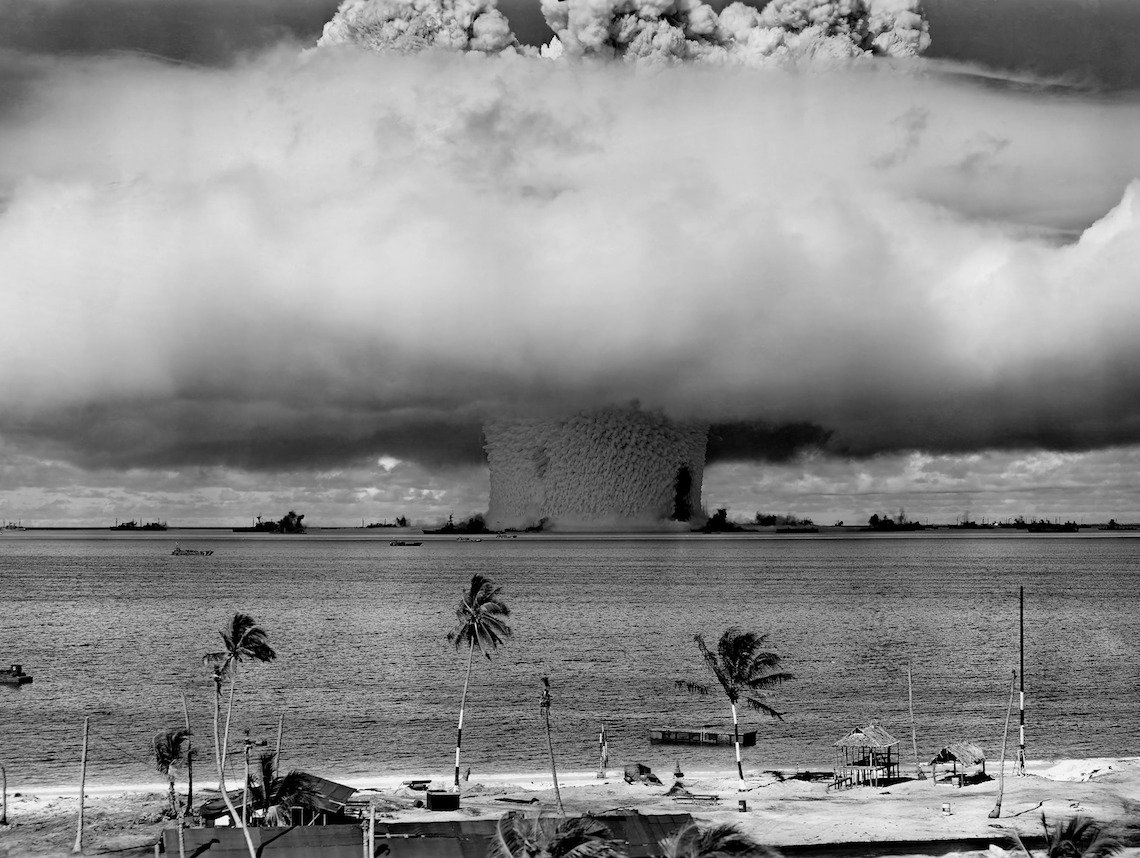
In the contest between crisis and calm, oy has an edge over om. Case in point: Just as I was giving meditation another try to take my mind off Donald Trump, the North Korea fire-and-fury horror show broke out, and Trump’s itchy finger on the locked and loaded nuclear trigger made my strategy for sanity look awfully iffy.
Even so, I’d rather be triggered to think about the risks of nuclear weapons, which don’t distract me nearly as much as they should, than be trolled by whatever random trash talk Trump tweeted 10 minutes ago.
Meditation is all about letting go of your thoughts. That’s hard enough to do for any of us whose attention is the plaything of stress about work and money, love and sex, sickness and sadness, not to mention unwanted desires, unbidden memories, undone to-do lists and other anxieties ad infinitum. Which is to say, just trying to kiss your ordinary, everyday thoughts goodbye is hard enough for all of us.
Now add all-Trump-all-the-time media to the mix, and the stress makes my head want to explode. Within hours of his nuclear saber-rattling, not only did he refuse to call out white supremacists, neo-Nazis and the Ku Klux Klan by name, he located them among “many sides,” setting up a moral equivalence between those thugs and the peaceful marchers
protesting those hate groups in Charlottesville, Va. His fake moral leadership 48 hours late only underscored how morally shrunken his own instincts are. What fresh hell is next? Each day’s news rubs our faces in how corrupt, deranged, deceitful, ignorant, impulsive and unfit for office the president is.
That surplus stress we’re under, the Trump news mental health penalty, piled on top of life’s usual worries and distractions, has hijacked my mindful attention, and maybe yours, since the election. Meditating regularly — not sporadically, as I’d lapsed into doing — seemed my best shot at escaping its clutches, short of moving to an ashram or bingeing on “The Bachelor.” But only a handful of days into resuming a daily meditation practice — boom! Armageddon is on the table and the end is nigh. Even for just 20 minutes at a time, try letting go of a thought like that.
The bright side, if there is one: The game of nuclear chicken Trump is playing with Kim Jong Un, despite its toll on our national nerves and its disruption of my try at zen, offers a teachable moment about something we’d all rather not think about.
When I was growing up, I was so crushed when my father showed little enthusiasm for building a cinder block fallout shelter in our cellar that I wrote to the Civil Defense Administration and received the how-to instructions in a self-addressed stamped envelope. His objection was cost, my father said; it’d be money down the drain, spent to protect us from something that was never going to happen.
Looking back, I suspect cost was a proxy for denial. Who could handle the truth about nuclear war? Our saltine-stocked refuge would have been incinerated instantly, along with our family, our house and every other family and house in Newark. Accepting the folly of protecting us from a Soviet H-bomb also would have required admitting the dementia of the duck-and-cover air raid drills my brother and I, like kids across the country, practiced at school.
Today, nine nations possess a total of nearly 15,000 nuclear weapons; the United States and Russia account for 93 percent of them. Protecting ourselves from them is as quaint a pipe dream now as it was during the Cold War. The consequence of those stockpiles: Three risks haunt the earth, and they might get the attention from us they deserve if denial weren’t our default way to deal with them.
The first risk is nuclear terrorism. The collapse of the Soviet Union created a black market in fissile material. Bomb blueprints are posted on the internet. The technology to build a bomb can be had for a few hundred thousand dollars. In former U.S. Defense Secretary William Perry’s nightmare, one nuclear weapon detonated on a truck in the heart of Washington, D.C., coupled with nationwide panic sparked by terrorist threats of more bombs in more cities, would bring America to its knees within days.
The second risk is a false alarm, like a spurious warning of an incoming missile attack, which would activate a launch-on-warning counterattack by the (un)attacked nation and a retaliatory barrage by the other. This is not a hypothetical example. In 1980, an alarm at the Pentagon’s Raven Rock Mountain command post in Pennsylvania warned that Soviet submarines had launched 2,200 nuclear missiles toward the U.S. It was caused by a malfunctioning computer chip that cost 46 cents. But no one knew that until only seconds before President Jimmy Carter would have ordered a massive counterstrike. Luck is not a plan.
The third risk is ego. Reckless leaders make escalating threats, masculine identity disorders run rampant, some accident happens — and the adults in the room are powerless to prevent a temper tantrum from blundering the world into millions of casualties. Macho histrionics get airtime and grab headlines, but what really warrants attention, expertise and public support today is the quiet, patient, backroom zen of negotiation, diplomacy and statesmanship.
Ironic, isn’t it, that what we most need now is for the art of the deal to trump Trump.
Marty Kaplan is the Norman Lear professor at the USC Annenberg School
for Communication and Journalism.





















 More news and opinions than at a Shabbat dinner, right in your inbox.
More news and opinions than at a Shabbat dinner, right in your inbox.